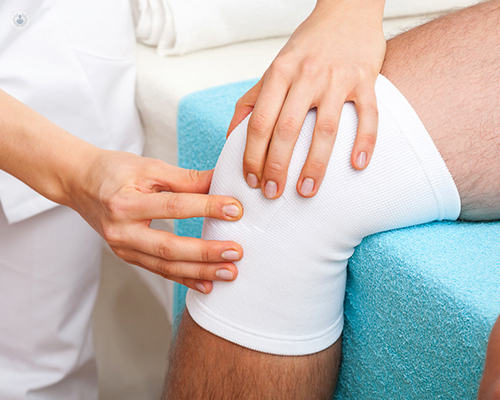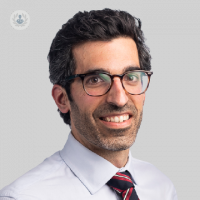Arthroscopic surgery: what conditions does it treat?
Written by:An arthroscopy is a form of keyhole (minimally invasive) surgery that is typically performed to treat issues with one’s joints, whether it be the knee, ankle, or shoulder.
In our latest article, revered consultant trauma and orthopaedic surgeon, Mr Francesc Malagelada, explains the difference between open surgery and arthroscopic surgery, reveals how safe arthroscopic surgeries tend to be, and explains what conditions arthroscopic surgery can typically treat.

What conditions can arthroscopic surgery treat?
Arthroscopy is a minimally invasive technique that enables surgeons to operate inside of a joint without having to open it up. It can be used in any moderately sized joint of the body with the knee and shoulder being the most popular ones.
Some of the conditions that can be successfully treated in the ankle include cartilage damage (so called osteochondral lesions, or arthritis), loose bodies, or bone fragments in the joint, and torn ligaments or scar tissue forming after ankle sprains.
Is the procedure safe?
It is very safe and as a matter of fact, the main goal of arthroscopy is to increase the safety standards of surgery by minimising the surgical aggression, and in turn, reducing recovery times. By making a smaller cut instead of opening up the whole joint, there is very little risk of complications. Having said that, any procedure carries surgical risks, but, in the case of arthroscopy, these are minimised, and the overall success rate is well beyond 95 per cent.
How does arthroscopic surgery compare with open surgery?
Arthroscopic surgery is a very modern technique that uses a small telescope (as little as two to four mm in diameter) to look inside the joint, and equally small instruments to perform the surgery. By doing this, the joint can be examined carefully and even better observed than when it is opened up with classic open surgery.
The whole procedure is visualised on a screen in the operating theatre. The main differences with open surgery for the patient are the shorter recovery times, smaller scars, shorter hospital stay, and fewer complications including less risk of infection. For the surgeon, the arthroscopic technique is very different and more challenging than open surgery, and so specialised training is required.
What aftercare is recommended after arthroscopic surgery?
The specifics of the aftercare will depend on the type of procedure performed. In the majority of cases, a small bandage and no crutches is the norm. A course of physiotherapy is very important post-operatively to return quickly to the previous level of activity and sports.
How long does it take to recover?
A quick recovery is the differentiating aspect of arthroscopy. The vast majority of procedures allow for full weight bearing straight away, and this means that the patient can walk out of hospital on the day of surgery. Sometimes, crutches can be used for support. Patients can return to work any time from seven to ten days following arthroscopic surgery, or even earlier if working from home.
With a good rehabilitation protocol, returning to sports after two to three weeks is achievable. Possibly, the only exception would be arthroscopic ankle fusion surgery where a cast will be needed for some weeks to allow the bone to heal adequately.
Mr Francesc Malagelada is a highly esteemed and experienced consultant trauma and orthopaedic surgeon who is an expert when it comes to performing minimally invasive arthroscopic procedures. Visit his Top Doctors profile today to book a consultation with him.


